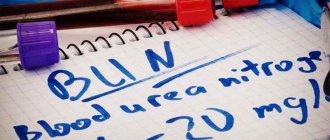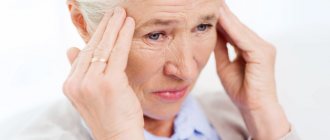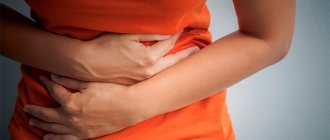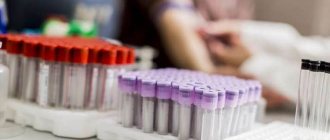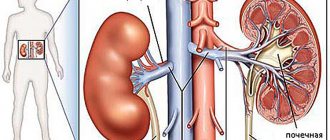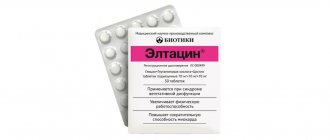Classification
Based on etiology, there are 2 main types of hyperuricemia:
- Primary
- occurs due to a genetically determined defect in enzymes involved in the metabolism of uric acid. - Secondary
– develops against the background of certain diseases, the action of toxins, medications, etc.
According to pathogenesis, there are 3 types of hyperuricemia:
- Metabolic (hyperproductive
) - associated with increased formation of uric acid. - Renal (hypoexcretory
) - due to a slowdown in the release of uric acid from the body in the urine. - Mixed.
According to clinical manifestations there are:
- asymptomatic hyperuricemia;
- acute/intermittent arthritis;
- interictal period;
- chronic tophi gout.
Gout symptoms
From Greek, gout is translated as “foot in a trap,” since the patient is primarily bothered by intense pain in the first metatarsophalangeal joint of the foot, knee or ankle.
It is also possible to involve the hand in the form of oligo or polyarthritis (inflammation of two or many joints). In this case, the joint becomes swollen, the skin above it acquires a red tint and begins to shine. This form of the disease is called acute gouty arthritis. The first clinical manifestations of the pathology may be preceded by a long asymptomatic period of hyperuricemia, when disorders are detected only by laboratory blood tests.
The first attacks of pain occur suddenly, mainly in the early morning or at night, tend to increase on the first day and completely disappear within a few hours or within a day. During an exacerbation of gout, signs of intoxication may also be present - increased body temperature, chills, weakness. After inflammation subsides, gouty arthritis occurs again, usually within six months to two years. As the disease progresses, the duration of periods of its asymptomatic course decreases, joint pain occurs more often and is more difficult to tolerate.
When going into a chronic form, gouty arthritis is accompanied by deformation and limitation of movements in the joints, pain of varying intensity becomes constant. Subsequently, deposits of uric acid crystals become visible. Under the skin, most often in the joint area, tophi appear - white or yellow nodules with crumbly, curdled contents. The formation of ulcers and purulent wounds is possible over them.
Hyperuricemia is accompanied by frequent exacerbations of concomitant diseases - coronary artery disease, diabetes mellitus, arterial hypertension, atherosclerosis. If gout complications develop, their characteristic symptoms are added. For urolithiasis, this is nagging pain in the lower back, periodic appearance of blood in the urine, and frequent urination at night. With a prolonged course of chronic tophi gout, the articular cartilage is destroyed, limitation of joint mobility persists outside periods of exacerbation, and complete fusion of the joint space with the formation of ankylosis (complete immobility of the joint) is possible. Depression can also be a consequence of constant pain.
Causes
Physiological reasons
In healthy people, transient or slight increases in uric acid (UA) concentrations may occur without any clinical symptoms. Most often, hyperuricemia is observed when eating meat foods, since meat products are rich in purine bases (adenine, guanine), which are a substrate for the synthesis of uric acid. Hyperuricemia also occurs with dehydration, intense physical activity, and alcohol intake.
Gout
This rheumatological disease can be considered a clinical manifestation of hyperuricemia. Gout develops as a result of a genetically determined defect in enzymes that regulate UA metabolism. Such defects include deficiency of hypoxanthine-guanine phosphoribosyltransferase and increased activity of 5-phosphoribosyl-1-synthetase. Violation of the functional activity of these enzymes leads to increased synthesis of uric acid.
In peripheral tissues, especially in joint capsules and cartilage, crystallization of uric acid salts occurs and their deposition. As a result, the following symptoms appear: acute, intense pain in the joints (usually in the first metatarsophalangeal joint), swelling of the joint with redness of the skin. A fairly specific symptom of gout is the formation of nodules - tophi, localized mainly on the auricles and the back surface of the elbow joints. Gout can also develop against the background of diseases that affect purine metabolism.
Hyperuricemia
Overproduction of uric acid
With intensive destruction of cells and their nuclei, nucleotides are released, from which a large amount of MK is subsequently formed, which leads to an increase in the level of MK. The presence of clinical symptoms of emerging hyperuricemia is determined by the degree of tissue destruction. Increased catabolism is observed in the following diseases and pathological conditions:
- Myeloproliferative and lymphoproliferative diseases (leukemia, lymphoma).
- Tumor lysis syndrome after chemotherapy courses.
- Congenital and acquired hemolytic anemia.
- Severe generalized psoriasis.
- Storage diseases: Gaucher disease, glycogenosis.
Slow elimination of uric acid
Approximately 2/3 of the total amount of MK is excreted in the urine. Therefore, any violation of the excretory function of the kidneys due to their organic damage can lead to hyperuricemia. The same thing often happens when the effective blood volume decreases, which disrupts the blood supply to the kidneys. The following are the main reasons for the suppression of uric acid clearance:
- Glomerulonephritis.
- Interstitial nephritis.
- Chronic renal failure.
- Massive bleeding.
- Congestive heart failure.
- Lead poisoning (lead nephropathy).
- Taking thiazide diuretics.
Other reasons
- Endocrine disorders: hypoparathyroidism, hypothyroidism.
- Diabetic ketoacidosis.
- Lactic acidosis.
- Preeclampsia.
- Sarcoidosis.
- Taking medications: acetylsalicylic acid, cytotoxic drugs (cyclosporine, sodium mycophenolate), anti-tuberculosis drugs (ethambutol, pyrazinamide), nicotinic acid.
General clinical recommendations for patients with gouty arthritis
All patients suffering from gout are advised to:
- follow a diet, lead an active lifestyle;
- follow all doctor's orders, including taking prescribed urate-lowering medications;
- monitor your weight;
- treat concomitant diseases: diabetes, obesity, angina pectoris, high blood pressure, chronic kidney disease.
Prevention of gout
Gout is most often associated with hereditary metabolic characteristics. There are also no factors predisposing to the development of this disease. If you eliminate their influence, then even if you have a family history, you can significantly reduce the risk of developing the disease. To do this, you need to follow the following recommendations:
- do not overeat, reduce the calorie content of your daily diet, do not consume offal, red meat, alcohol, quit smoking;
- get rid of excess weight;
- Take any medications in consultation with your doctor - some of them increase the concentration of uric acid (diuretics, nicotine, acetylsalicylic acid, etc.);
- regularly treat chronic diseases: diabetes, obesity, kidney and cardiovascular diseases;
- men over 40 years old, and women over 50, periodically check the level of uric acid in the blood.
Diagnostics
If hyperuricemia is detected, you must consult a general practitioner to determine the cause of its occurrence. At the appointment, the presence of symptoms characteristic of this condition is clarified. The joints that are bothering the patient are carefully examined for swelling or redness. It is determined whether the patient has any chronic diseases, whether he is registered with a dispensary, and what medications he takes. An additional examination is prescribed, including:
- Blood tests.
During a gout attack with severe symptoms, a general blood test shows an increase in ESR and neutrophilic leukocytosis. In biochemical analysis, in addition to hyperuricemia, inflammatory markers are detected (increased C-reactive protein, ferritin); in patients with renal pathology, increased concentrations of creatinine and uric acid are detected. - General urine analysis.
Microscopic examination of urine sediment reveals a large number of urate crystals. In nephrological patients, a chemical analysis of urine may reveal protein, red blood cells, and a change in its relative density. - Study of joint fluid.
To obtain synovial fluid, a puncture of the affected joint is performed. In the native unstained preparation, needle-shaped crystals of monosodium urate are detected by polarization microscopy. This is the gold standard for diagnosing gout. These crystals can also be found in the contents of tophi. - X-ray of joints.
X-ray changes in patients with gout appear only several years after the onset of the disease. Typical radiographic findings include well-defined bone defects in the epiphyses of the feet and hands.
Diet for hyperuricemia
Approach to the treatment of gouty arthritis at the Paramita clinic
Our clinic has developed a unique method for treating gouty arthritis. There are two opposing approaches to identifying and treating this disease. First of all, a thorough clinical, laboratory and instrumental examination of the patient is carried out. After establishing the final diagnosis and concomitant diseases, individually selected comprehensive treatment is prescribed, including:
- modern Western techniques, including the use of the latest medications; this allows you to eliminate inflammation and pain during a gout attack and maintain the desired level of uric acid in the blood serum during the inter-attack period;
- traditional oriental techniques that have a regulating effect on the body as a whole and on the site of inflammation; techniques allow you to eliminate pain after the first session; After the course of treatment, the patient feels a surge of strength and complete renewal.
We combine proven techniques of the East and innovative methods of Western medicine.
Read more about our unique method of treating arthritis
A completed course of treatment and properly selected urate-lowering therapy allows the patient to forget about gout attacks for a long time (in most cases until the end of life). You can get more detailed information about treatment at the clinic on our website.
Correction
Drug treatment
To correct hyperuricemia, it is necessary to eliminate the etiological factor. If, during the collection of anamnesis, it turns out that the patient is taking a drug that causes hyperuricemia, one should consider either reducing the dosage or replacing the drug with an alternative one that does not have such side effects. Treatment tactics are largely determined by the presence of clinical symptoms, as well as their severity.
- Diet.
People suffering from gout should definitely stop drinking alcohol and exclude high-purine foods (red meat, liver, smoked meats) from their diet, as they can provoke an increase in symptoms. - Colchicine alkaloids.
The main group of drugs for the relief of acute gout attacks. Reduction of symptoms occurs within 12 hours after the first dose. - NSAIDs.
Prescribed in addition to colchicine alkaloids to relieve arthritis symptoms. Preference is given to drugs with the most pronounced analgesic and anti-inflammatory effect. - Glucocorticosteroids.
Hormonal drugs are used to eliminate symptoms in case of individual intolerance to colchicine and NSAIDs or if the patient has strict contraindications to their use. - Uricodepressors.
Drugs in this group reduce the content of UA by suppressing the activity of the enzyme involved in the synthesis of UA (xanthine oxidase). Long-term use helps reduce the incidence of gout symptoms, slow down the deposition of crystals and the formation of tophi. - Selective xanthine oxidase inhibitors.
The main difference from uricodepressors is the lower incidence of unwanted side reactions, such as upper and lower respiratory tract infections, hepatotoxicity, and hypersensitivity reactions. - Uricosuric drugs.
These drugs inhibit the reabsorption of sUA in the renal tubules, thereby increasing the excretion of sUA. - Anti-gout drugs of mixed action.
There are also combination drugs that simultaneously act on 2 levels of urinary magnesium metabolism. They contain a uricodepressive component and a uricosuric agent. - Alkalizing drugs.
To prevent the development of urate nephropathy and the deposition of urate stones, the main urate-lowering therapy should be supplemented by taking drugs to alkalinize urine - sodium citrate, sodium bicarbonate.
Experimental therapy
Development and clinical trials of new drugs to combat hyperuricemia continue. Rasburicase, a drug containing recombinant uricase (an enzyme that destroys uric acid), has shown high effectiveness in the treatment of tumor lysis syndrome. This drug is also distinguished by the possibility of resorption of deposited sodium monourate crystals.
Promising is the use of genetically engineered biological drugs - an antagonist of interleukin-1 receptors (anakinra), fully humanized monoclonal antibodies to IL-1-beta (canakinumab), soluble protein IL-1 (rilonacept). Their use has demonstrated sufficient effectiveness in preventing exacerbations of symptoms of chronic gouty arthritis.
Frequently asked questions about the disease
Is it possible to get disability?
For chronic tophi gouty arthritis with impaired joint function.
Which doctor treats you?
Rheumatologist.
What prognosis do doctors usually give?
With proper systematic treatment under the supervision of a physician, the prognosis is favorable.
Gouty arthritis requires constant monitoring by a rheumatologist, urate-lowering therapy, diet and all doctor’s recommendations. If treated correctly, you can forget about gout attacks forever. Doctors at the Paramita clinic have extensive experience in treating gout. Contact us!
Literature:
- Fedorova A. A., Barskova V. G., Yakunina I. A., Nasonova V. A. Short-term use of glucocorticoids in patients with prolonged and chronic gouty arthritis. Part III. Frequency of development of adverse reactions // Scientific and practical rheumatology. 2009; No. 2. pp. 38–42.
- Eliseev M. S. Gout. In the book: Russian clinical guidelines. Rheumatology / Ed. E. L. Nasonova. M.: GEOTAR-Media, 2021. pp. 372–385.
- Rainer TH, Cheng CH, Janssens HJ, Man CY, Tam LS, Choi YF Oral prednisolone in the treatment of acute gout: a pragmatic, multicenter, double-blind, randomized trial // Ann Intern Med. 2016; 164(7):464–471.
- Reinders M., van Roon E., Jansen T., Delsing J., Griep E., Hoekstra M. et al. Efficacy and tolerability of urate-lowering drugs in gout: a randomized controlled trial of benzbromarone versus probenecid after failure of allopurinol // Ann Rheum Dis. 2009; 68:51–56.
Themes
Arthritis, Joints, Pain, Treatment without surgery Date of publication: 01/25/2021 Date of update: 02/02/2021
Reader rating
Rating: 4.54 / 5 (13)
